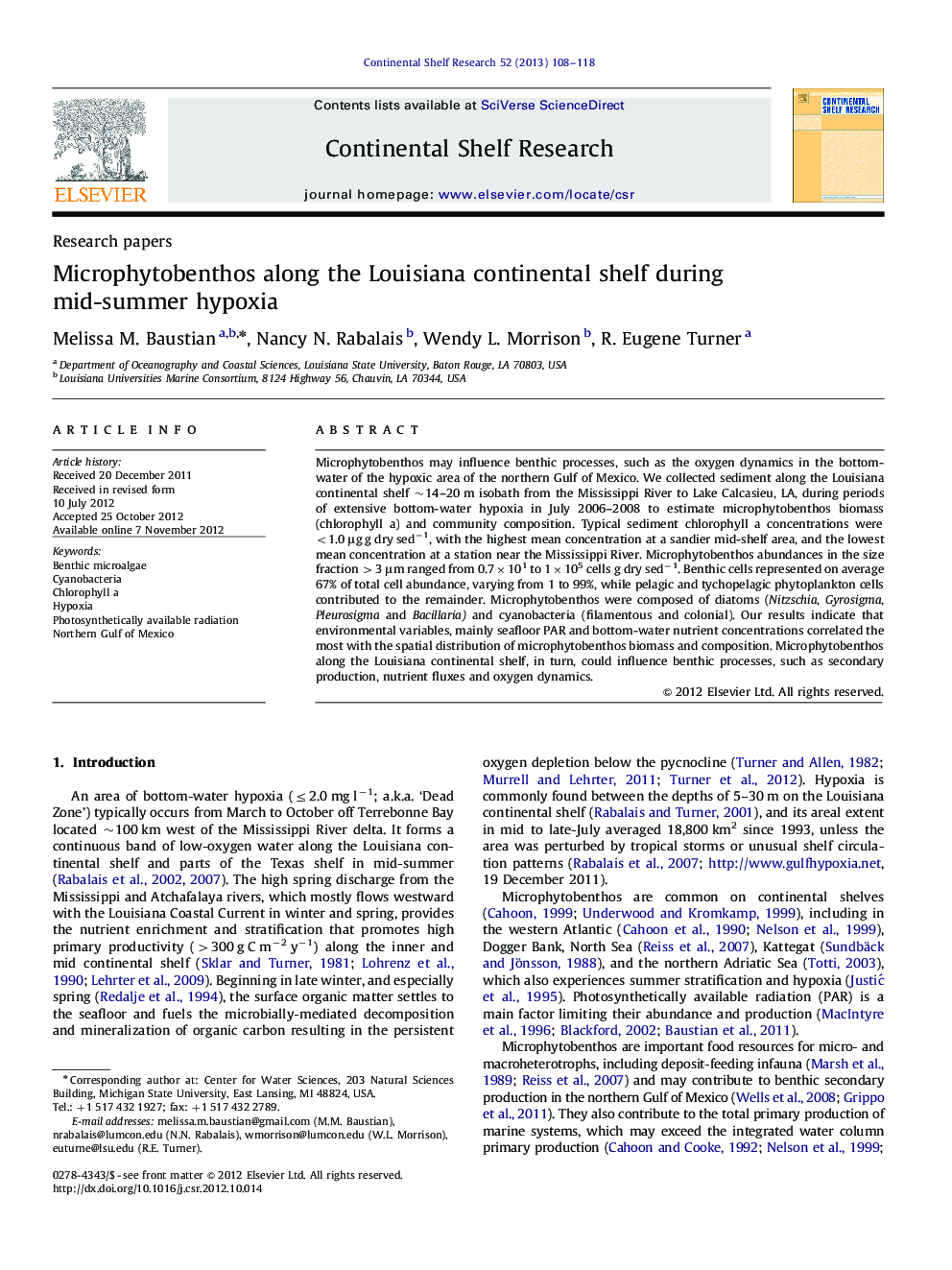| Article ID | Journal | Published Year | Pages | File Type |
|---|---|---|---|---|
| 4532290 | Continental Shelf Research | 2013 | 11 Pages |
Microphytobenthos may influence benthic processes, such as the oxygen dynamics in the bottom-water of the hypoxic area of the northern Gulf of Mexico. We collected sediment along the Louisiana continental shelf ∼14–20 m isobath from the Mississippi River to Lake Calcasieu, LA, during periods of extensive bottom-water hypoxia in July 2006–2008 to estimate microphytobenthos biomass (chlorophyll a) and community composition. Typical sediment chlorophyll a concentrations were <1.0 μg g dry sed−1, with the highest mean concentration at a sandier mid-shelf area, and the lowest mean concentration at a station near the Mississippi River. Microphytobenthos abundances in the size fraction >3 μm ranged from 0.7×101 to 1×105 cells g dry sed−1. Benthic cells represented on average 67% of total cell abundance, varying from 1 to 99%, while pelagic and tychopelagic phytoplankton cells contributed to the remainder. Microphytobenthos were composed of diatoms (Nitzschia, Gyrosigma, Pleurosigma and Bacillaria) and cyanobacteria (filamentous and colonial). Our results indicate that environmental variables, mainly seafloor PAR and bottom-water nutrient concentrations correlated the most with the spatial distribution of microphytobenthos biomass and composition. Microphytobenthos along the Louisiana continental shelf, in turn, could influence benthic processes, such as secondary production, nutrient fluxes and oxygen dynamics.
► Distribution of microphytobenthos were evaluated on Louisiana continental shelf. ► On average, 67% of cells on sediment surface were benthic. ► Diatoms and filamentous cyanobacteria were most common. ► Variable abundances and biomass observed along the shelf. ► Microphytobenthos could influence bottom-water oxygen dynamics.
